Have you ever seen jagged edges, flickers, or lines in videos or games? That is called video aliasing, which occurs when the resolution is not able to render smooth lines cleanly and smoothly, resulting in a jagged, rough, or blocky image. Video aliasing is a known issue in video playback and gaming, but worry not, it is something we can eliminate. This review will explain what video aliasing is, why it happens, and how to prevent it. We will also demonstrate how anti-aliasing functions in games work, how to enable them, and what to do if enabling them results in choppy performance. In addition, we will present you with a brilliant tool that will enhance the clarity and smoothness of your video. You will know how to work through video aliasing to have cleaner, sharper images.
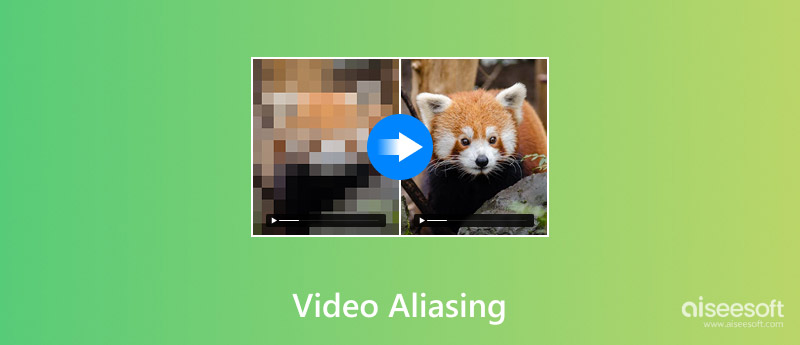
Aliasing in video occurs when a digital screen or camera cannot reproduce smooth edges or fine detail accurately, resulting in jagged lines, flickering, or unexpected movement. To clarify, aliasing occurs when the resolution is insufficient to represent the original image, resulting in a display that produces unnatural or distracting distortion. It is commonly called an aliasing video issue.
One of the main reasons behind this is limited pixel density. When the resolution of the video or display is too low, fine details are lost, and edges look rough instead of smooth. Another cause is poor sampling during video rendering, where the system fails to capture enough data to represent the visual accurately. It leads to what’s often called an aliasing artifact video, which appears as shimmering, jagged edges, or moiré patterns.
Aliasing can be frustrating when you’re watching videos or playing games because it makes edges look rough and distracting. The good news is that there are several ways to reduce or even eliminate these visual issues. Below are some effective methods to help you avoid aliasing and enjoy smoother, clearer visuals.
• Enable Anti-Aliasing
• Increase Resolution
• Adjust Graphics Settings
• Improve Lighting and Contrast
A method for eliminating sharp edges and producing crisper images is anti-aliasing. If you have experienced rough outlines or pixelated edges and enabled similar video game anti-aliasing settings, it can help resolve this issue. Almost all current games and graphics cards support some form of anti-aliasing, with a variety of options available to adjust the effect. You can choose your preferred settings in terms of quality, performance, etc.
How to Enable Anti-Aliasing in Games
• In-Game Settings:
• Through the GPU Control Panel (NVIDIA/AMD):
Enabling anti-aliasing helps reduce shimmering and jagged lines, making the overall gaming experience much smoother and visually appealing.
Turning on anti-aliasing makes game graphics look cleaner, but it can also slow down your system. It happens because anti-aliasing puts extra pressure on the GPU, which may lower frame rates and cause stuttering. Instead of smooth gameplay, the video may appear laggy or choppy, even if the visuals look sharper. A simple solution is to use VidHex. This AI tool enhances your gameplay recordings by filling in missing frames using frame interpolation, improving clarity through upscaling, and preserving motion. With VidHex, you can keep anti-aliasing on for crisp visuals and still enjoy smooth, polished recorded game videos!

117,882Downloads
100% Secure. No Ads.
100% Secure. No Ads.
How to Frame-Interpolate in VidHex
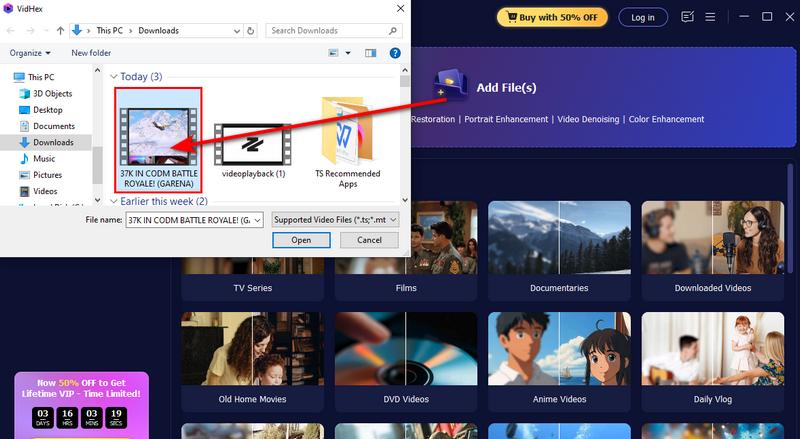
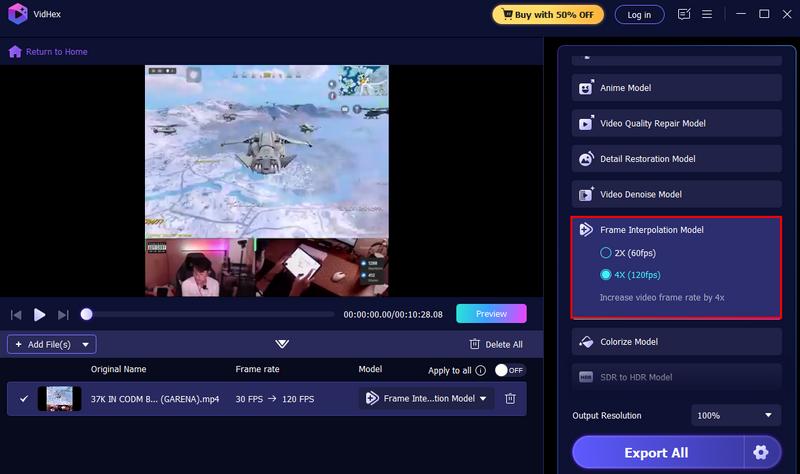
Note: You can change the desired video format in the Gear icon.
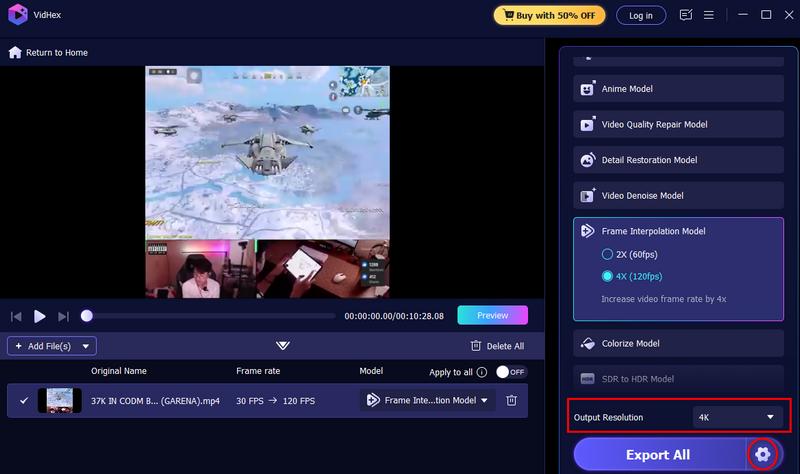
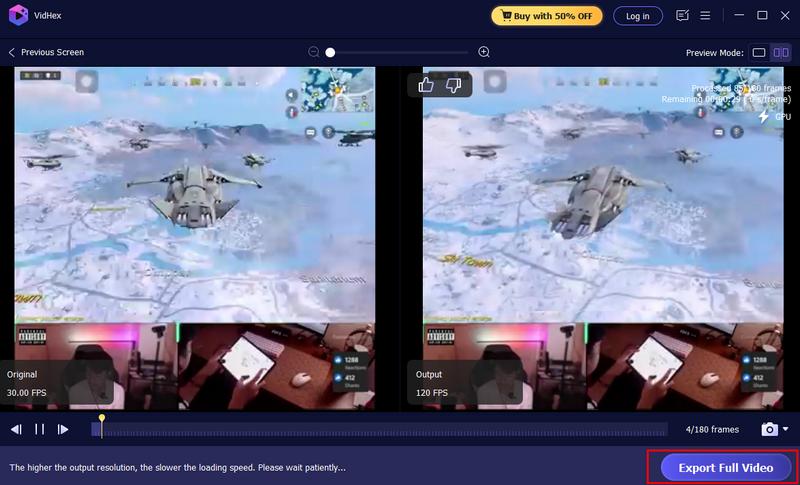
Does anti-aliasing lower FPS?
Yes, because anti-aliasing requires additional GPU processing, turning it on can slightly reduce frame rates so that you have to perform frame interpolation to save your video. Nonetheless, contemporary PCs and AI technologies help achieve a balance between performance and quality.
Do higher resolutions reduce aliasing?
Yes. Recording or playing at higher resolutions like 4K resolution reduces aliasing since more pixels capture finer details, making edges smoother.
Is aliasing only a video issue?
No. Aliasing can happen in images, audio, and video. In audio, for example, it creates distortion, while in visuals, it creates jagged lines and flicker.
Conclusion
Aliasing videoAliasing video is a common problem that can result in a jagged, flickering or less professional appearance. Aliasing usually occurs due to low resolution, poor rendering, or a lack of anti-aliasing techniques. There are no worries, however, as there are meaningful ways to lessen aliasing through higher resolutions, enabling anti-aliasing while gaming or tuning your settings. If your video or gameplay still looks choppy even with anti-aliasing, high-tech AI utilities such as Aiseesoft VidHex can strengthen the blurred frames without losing clarity. Ultimately, understanding the factors behind aliasing and its process will help you ensure that your videos and games are sharper, smoother, and far more enjoyable to watch.

VidHex is an AI-powered video enhancer that upscales, denoises, colorizes stabilizes, and improves video quality in 1 click.
100% Secure. No Ads.
100% Secure. No Ads.